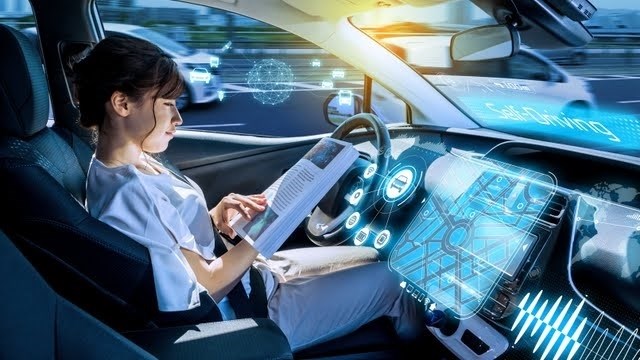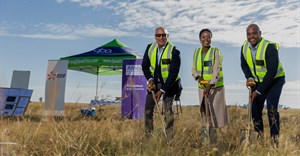A data centre on wheels - where is it taking us?

When you dig into what’s making automobile automation possible, you will find that a lot of computing horsepower is being packed into the design and it’s embedded into the vehicle itself.
So why did the designers put the system into the car instead of in the cloud? Latency is critical, so the compute power must be tightly integrated into the control loop for the car. Like its pavement counterpart, you want to avoid a traffic jam on the information highway too. The last thing you’d want is for a round trip time to a cloud data centre to prevent your self-driving car from safely delivering you to your destination.
This design model presents new challenges to the industry. There will be no single standard for edge IoT compute form factors. There will be common design points that most industry verticals will care about to some degree. Composing technology in a way that is adaptable to these various requirements will be a challenge that will separate the creative innovators from the fast followers.
To help stimulate the innovators out there, Lenovo Data Center Group picks apart the edge IoT (Internet of Things) data centre of the future with three basic design questions.
1. What workloads are going to be running?
Machine learning and artificial intelligence are all the rage of late. These techniques aren’t new. What’s all the fuss about?
In a word, it’s about data.
For many applications, you’ll need to have dynamic tuning of sensor data as conditions change. This will require the embedded artificial intelligence driving the cars to go through training, re-training, and lots of it. This is the obvious answer. Beyond that, you’re going to need the infrastructure applications to connect systems to users, the cloud, their peers, and potentially, the environment around them.
System designers need to grow in their thinking to incorporate these elements into their foundational designs for edge systems. Finally, they shouldn’t overlook the old-fashioned applications run in other places today. Putting data centre-class computing power where it didn’t exist before will create an incentive for software developers to build applications for it.
What are the primary constraints in the environment?
The answers here will vary, but nothing at the edge will behave as a data centre does. Lack of strict environmental control and limited ventilation may be common. How many Gs do you experience when you hit a pothole at 60kmph? Will we need airbags for our mobile IT? What is your high-availability requirement and model for redundancy? The idea of putting hyper-converged infrastructure into an edge appliance might raise questions, but it does make for a robust platform with a good deal of general compute capability.
How will you manage the lifecycle?
Data centre IT is built based upon some principal assumptions of the lifetime of a generation of technology. These assumptions are wrong in many IoT environments.
As an example, you bought a Google TV in 2009. It’s a generation behind in display technology (HD instead of 4K), but it adequately delivers what you need for viewing most content nine years into its service. It will probably be in use for several more years. The brand stopped issuing updates for the embedded system years ago. The hardware simply no longer keeps up with new application development.
Even if you wanted to, there is no way to upgrade the memory and CPU without replacing the entire television and its very expensive display. That makes it a technical orphan. It’s unfortunate. The idea was great. The execution failed to comprehend the difference in lifespan of the composed technology. We need to figure this out.
Beyond the hardware considerations, a new model for management must be designed as well as maintenance and refreshing of distributed data centre technologies.
This is a new frontier in technology. The world is transforming because of it. We are setting the table. As we do so, we need to think beyond the technology packaging and delivery we do for traditional and cloud data centres today. Great innovations come from internalising the problems of the customer and applying technology in creative ways to solve them.
Are we thinking far enough from our comfort zone to make the leap to the future?
Lenovo is driving edge computing to the centre of our thinking about IoT and will be ready to meet you wherever your edge happens to be.










